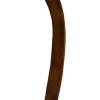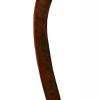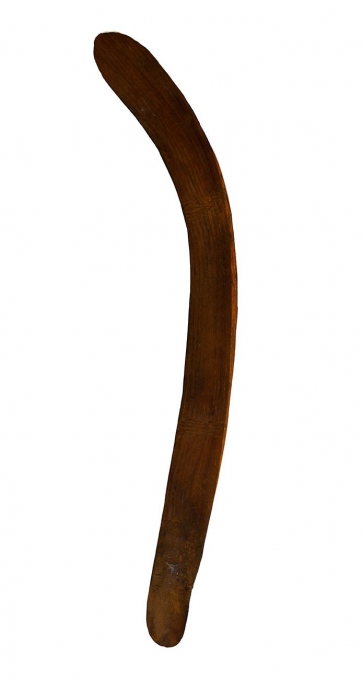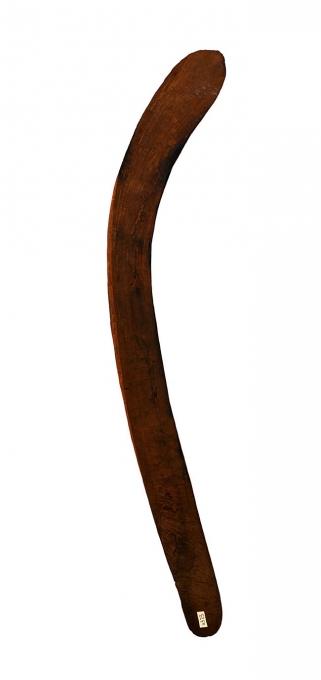The boomerang was the first heavier-than-air flying instrument to be invented by man. Although it has become one of Australia's emblems. Similar sticks have been found in Europe, Africa, America and Asia. So why are they still most associated with Australia? The first time Western man came into contact with boomerangs was when English settlers, and in particular Captain Cook, arrived in New South Wales in 1770. This is why the boomerang is still remembered as an object used mainly by the Australian Aborigines. There are two possible meanings for the term "boomerang". The first comes from Cook's encounter with the Turuwals, an Aboriginal tribe from New Wales. When they caught up with the flying object, they exclaimed "boom - ma - rang", meaning "Come back, stick! The second comes from the Aboriginal word 'boomari', meaning 'wind'. Boomerangs are generally made from a piece of wood cut from an acacia or eucalyptus branch. The shape is first roughened with an axe, then heated over a wood fire and bent into the shape we know. Finally, the boomerang is worked with flint, polished and sometimes painted. The aborigines had many uses for the boomerang: hunting, games and music. As a result, the boomerang can take many different forms. Boomerangs can be used in a variety of ways. For hunting, boomerangs were known as "killing sticks" or "throwing sticks". These were less curved, if at all, and much heavier (between 300 and 400 grams). They were used by the Aborigines to drive frightened birds into nets. They also used them to hunt kangaroos and emus. The Aborigines aimed at their legs, which would break under the weight and speed of the killing stick. This made it easier to catch prey. These hunting sticks had no return. Once thrown by its owner, it flew straight to its target and did not return to the sender. In rare cases, these hunting sticks were also used as puzzles in battles against other aboriginal tribes. On the other hand, boomerangs with a return did exist among Aboriginal tribes, but these much lighter ones were not used for hunting. They were made for recreational purposes, such as music or games. These boomerangs are much more curved than killing sticks, allowing them to return to the sender. They were often painted and decorated with much more attention than those used for hunting. Throwing contests were organised between boomerang holders. These boomerangs are much more curved than killing sticks, allowing them to return to the sender. They were often painted and decorated with much more attention than those used for hunting. Throwing contests were organised between boomerang holders. As for music, boomerangs were rubbed or knocked together to accompany the didgeridoo at ceremonies and festivals. Boomerangs are still produced today, but they take on much more original colours and shapes than those produced by the aborigines of yesteryear. Those that have kept the same shape have retained their recreational function. They are used in sports and boomerang throwing competitions, which are becoming increasingly important around the world.
ANONYME
Boomerang , c.1950
Art : Aboriginal
Origine : Autres / Others
Dimensions : 5,5 x 63,5 x 0,5 cm
Medium : Wood
Price : Nous contacter / contact us
N° : 4323



